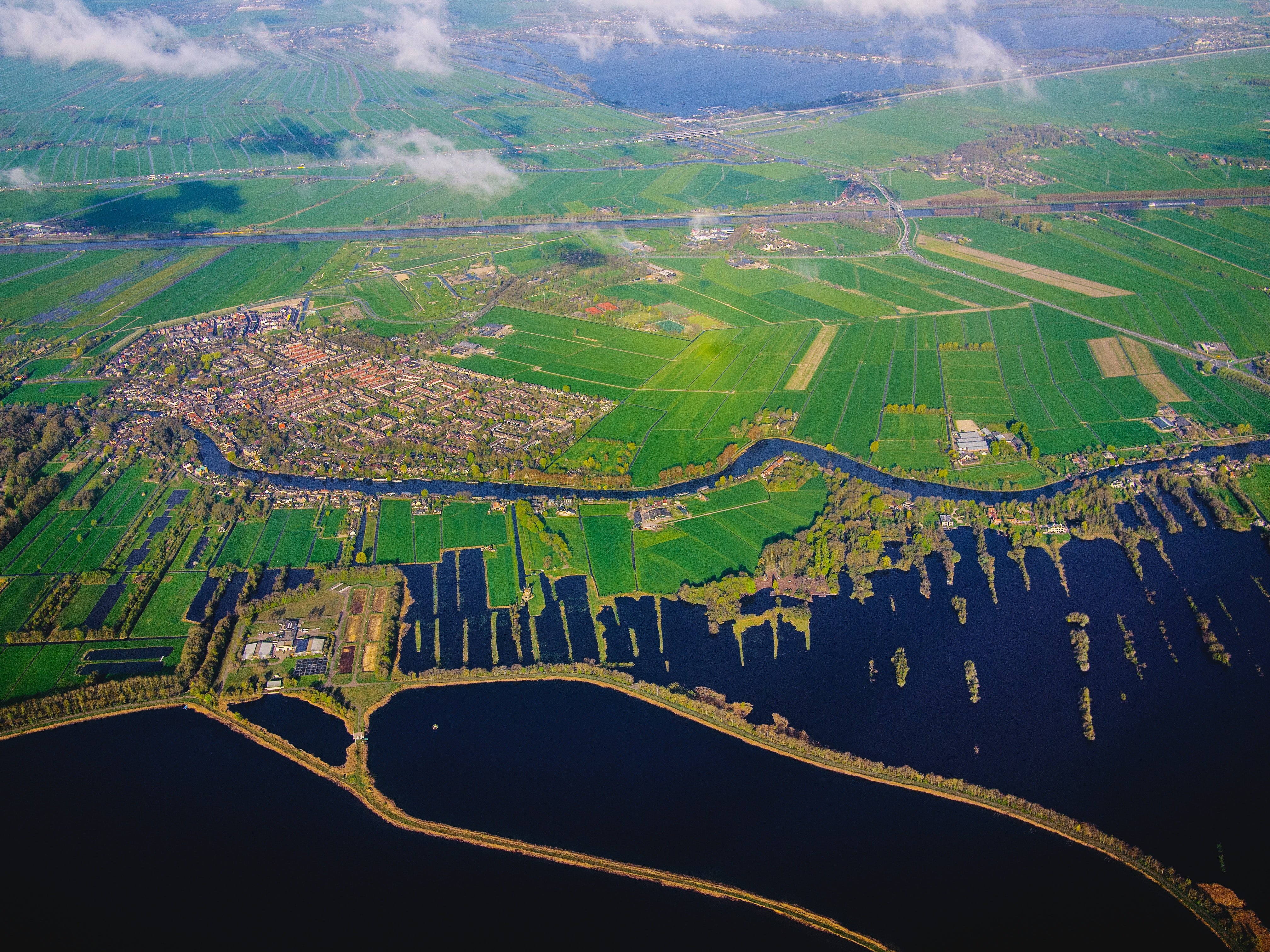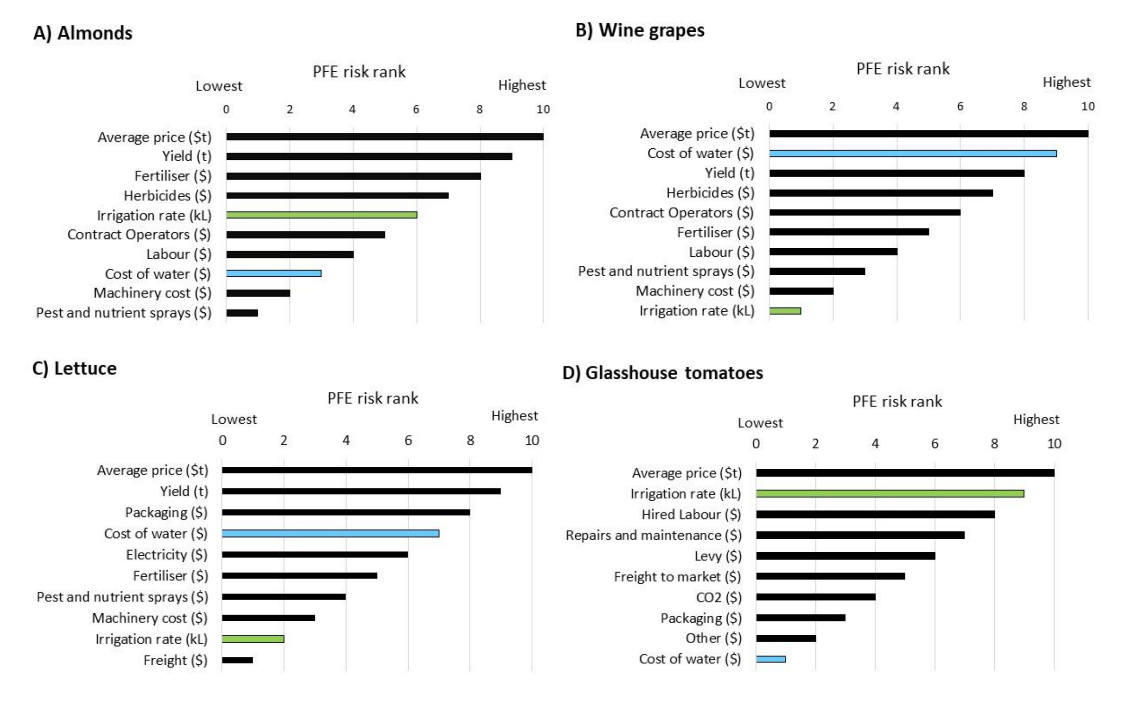Understanding the Affordability of Reclaimed Water: An Agricultural Enterprise Perspective

Executive Summary
To maximise the uptake of reclaimed water by agribusiness there is a need to better understand the economic drivers and preferences of specific farmers. Most previous studies assume that any water-using enterprise will benefit from water access. However, this approach fails to acknowledge that some enterprises are more exposed than others to shifts in the price and availability of water. This study directly addresses this weakness by modelling the risk of higher water prices and reduced access using simulation modelling of different farm enterprises to improve uptake and viability of reuse schemes.
Introduction
Water recycling schemes benefit users, water authorities, communities, and the environment. For example, the use of reclaimed water in agriculture enables freshwater to be preserved, while providing farmers with climate independent and nutrient rich water. Successful uptake of reclaimed water by agribusiness also has the potential to create local jobs and generate revenue. In some cases, the market demand and economic benefits are poorly understood, rendering the business case for investment in recycled water difficult to establish. As such, economic viability has been highlighted as one of the major concerns restricting the expansion of recycled water in Australia, even though the non-interruptible supply through reuse is logically attractive to water-dependent businesses. A better understanding of the economic barriers and preferences of farmers is therefore key to maximising the uptake of reclaimed water by agribusiness. To achieve this, there is also a need to understand customer heterogeneity given that water demand, production costs and profitability risks differ markedly between crop types.
This study aimed to develop an enterprise model that examined risks to profitability associated with reliable reclaimed water across different crop types. The model was used to illustrate how profitability is determined across different farm enterprises and identified risk parameters that are likely to be most influential. These parameters included irrigation rates, crop yield, commodity price, and a wide range of operating costs such as water, labour, chemicals, energy and machinery. From this, the model identified which crops and which scenarios are particularly sensitive to water access and water prices.
This information can help water utilities target sectors that would stand to benefit most from access to reclaimed water, which can help meet full delivery capacity of current and new reuse schemes. This ‘bottom-up’ approach also provides a means for water utilities to achieve fit-for-purpose water reuse by aligning capital investment and water quality with end-user preferences.
Highlights
- A farm enterprise model was developed to understand how risks to profitability are determined
- Crops assessed included almond orchards, vineyards, glasshouse tomatoes and lettuce
- Wine grape profits were most sensitive to water prices and least sensitive to changes to irrigation rate
- A crop like glasshouse tomatoes is particularly exposed to interruptions to water supply
- We identified factors that bear on profitability, exposing conditions that encourage reuse adoption at full cost
Methodology
This study developed a farm enterprise model that illustrates how profitability for different farm enterprises is impacted by different risks. Crops assessed included almond orchards, vineyards, glasshouse tomatoes and lettuce. These were selected to represent a mix of value types, with different water treatment requirements, in terms of health-based targets (pathogen removal).
The modelling incorporated distributions for each production variable (operating cost: fertiliser, fuel, chemical use, labour, water, machinery and income: crop yield and price). Distribution fitting of these variables was performed using 10 years of gross margin data published by a variety of public sources (such as the Department of Primary Industries and Regions) for each of the crop types. Distribution fitting was undertaken in preparation for Monte Carlo simulation using Palisade @Risk software. The ability to characterise and incorporate parameter variance into the enterprise model was necessary to understand sensitivity to different factors like changes in water prices and availability.
Model outputs include a ranking of variable (operating) costs (thousands of dollars per hectare) that were associated with the cost of producing each crop. This can provide a direct comparison of where the cost of water ranks relative to other operating costs (machinery, labour, energy, chemicals). Similarly, the ranking of ‘irrigation rate’ provides insights into the relative importance of risks to non-interruptible water access for each enterprise. Outputs are also based on the risks that attend Profit at Full Equity (PFE), which incorporates additional factors such as market price and crop yield. Sensitivity analyses was run to determine the reservation price of water for each crop— the cost at which the enterprise is still profitable.
Outcomes
- All enterprises have a reservation price for water that significantly exceeds the current asking rate from most reclaimed water schemes in Australia, at least at full equity.
- Figure 1 provides a ranking of risk for key parameters that influence PFE for each crop type.
- Of the enterprises modelled, wine grapes are most exposed to the risks that relate to the cost of water, so this enterprise is most likey to be interested in securing reliable water at a reasonable price.
- The average price of outputs is the greatest risk to all enterprises modelled and is likely to dominate the thinking of many decision makers (Figure 1).
- The irrigation rate is an important risk driver for glasshouse tomatoes and to a lesser extent almonds. These enterprises are thus more inclined to seek security of water supply (Figure 1).
- Our approach demonstrated that enterprises differ greatly in terms of the relative importance of water access and its cost. This type of information should be taken into account to understand likely uptake of reclaimed water schemes (that offer reliable but often higher cost water).
Conclusion
The ‘bottom-up’ enterprise model employed in this study has identified food crops that would stand to benefit most from access to reclaimed water and access at reasonable cost. Unlike other studies, we specifically modelled the risks that face different enterprises. We found that some enterprises, like wine grapes, are particularly exposed to fluctuations in water prices, while greenhouse tomatoes are exposed to supply interruptions. Accordingly, these enterprises are much more likely to benefit from and participate in reclaimed water projects, but will be motivated by different terms and conditions. This provides important insights to those developing and promoting reclaimed irrigation schemes.

Figure 1: Risk ranking from highest to lowest for key parameters that influence Profit at Full Equity (PFE) for almonds, wine grapes, lettuce and glasshouse tomatoes.
